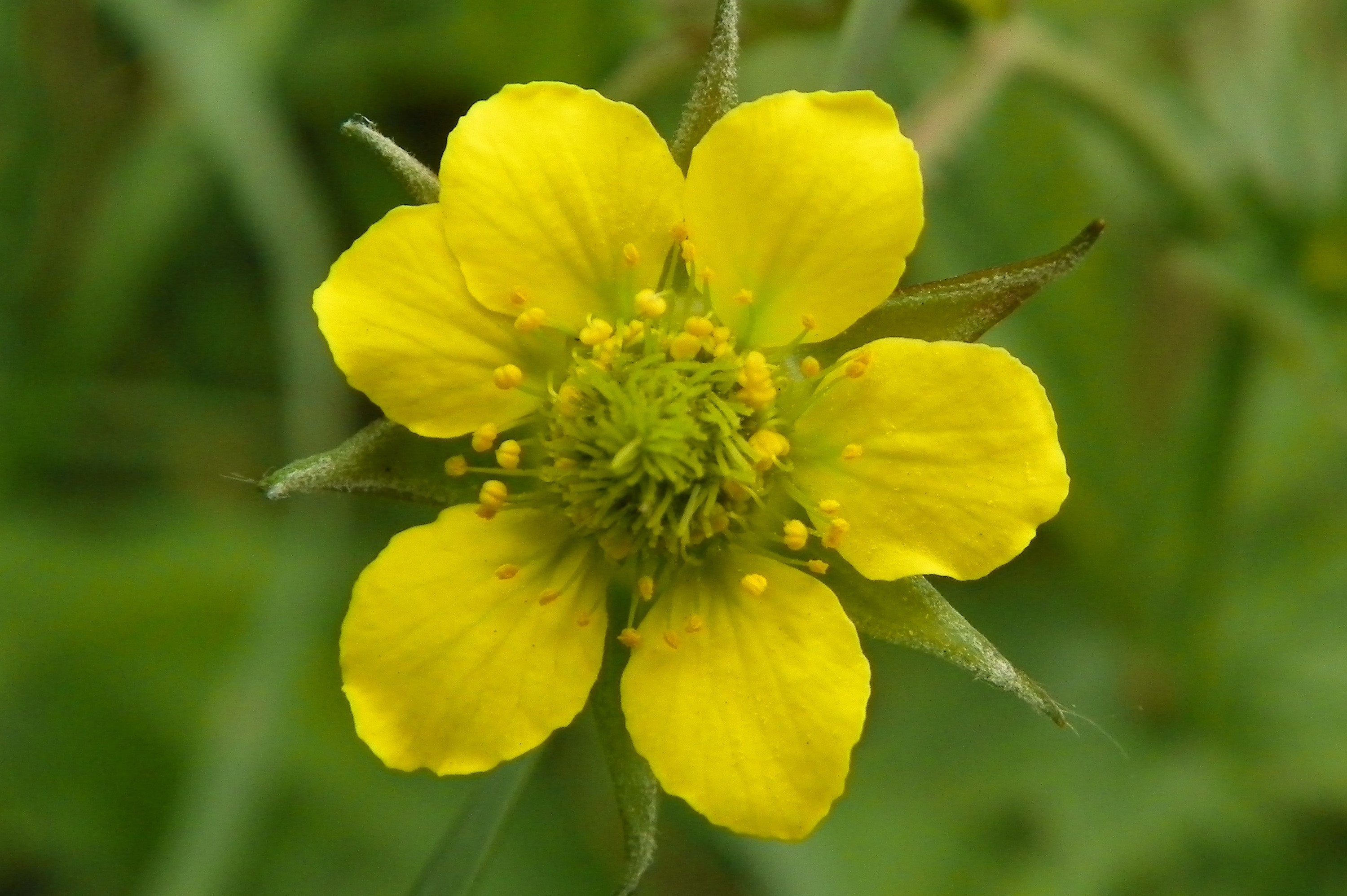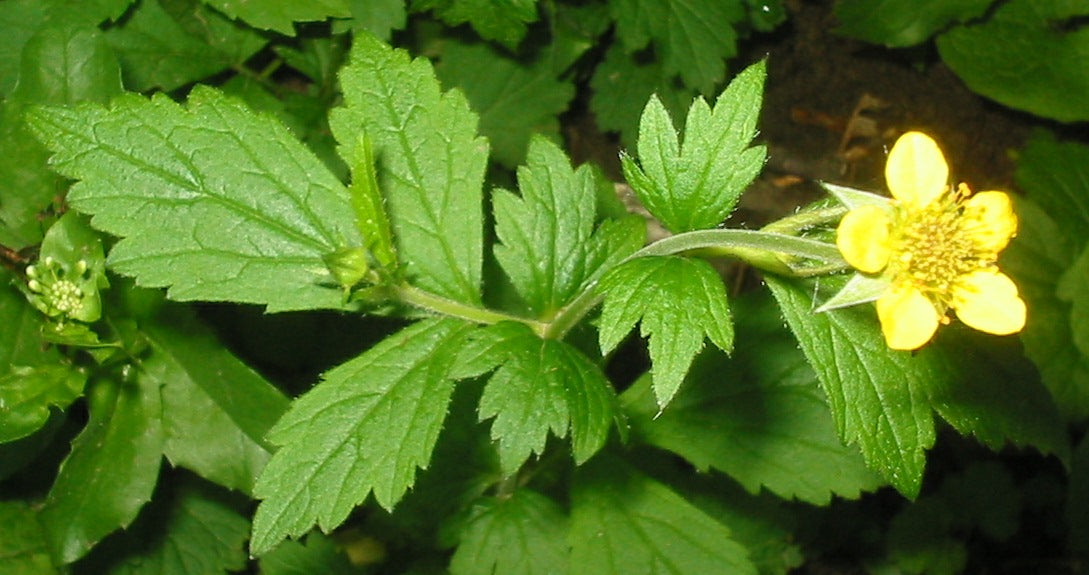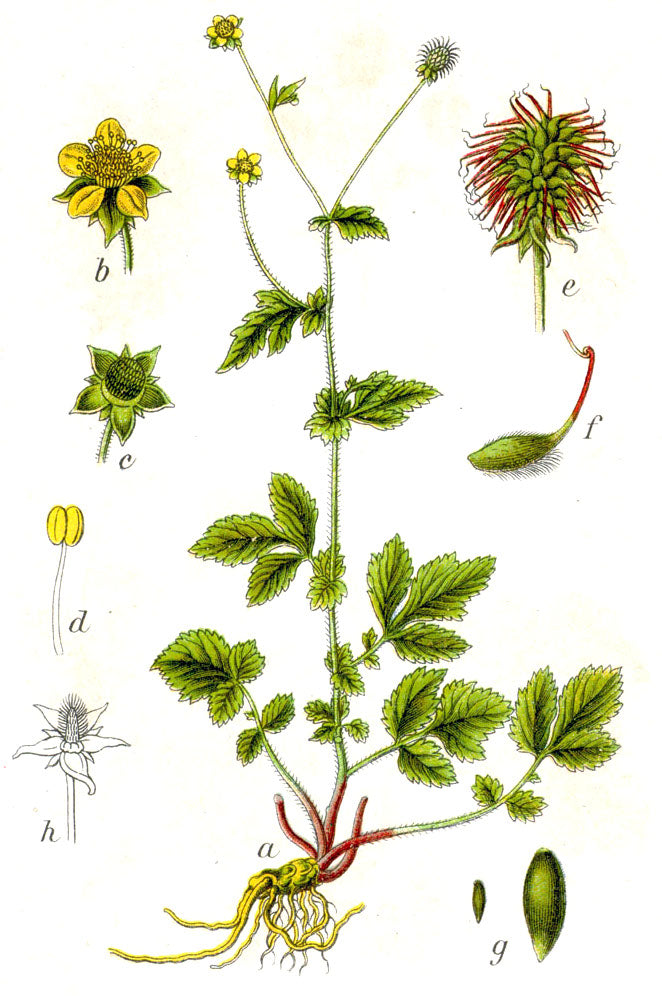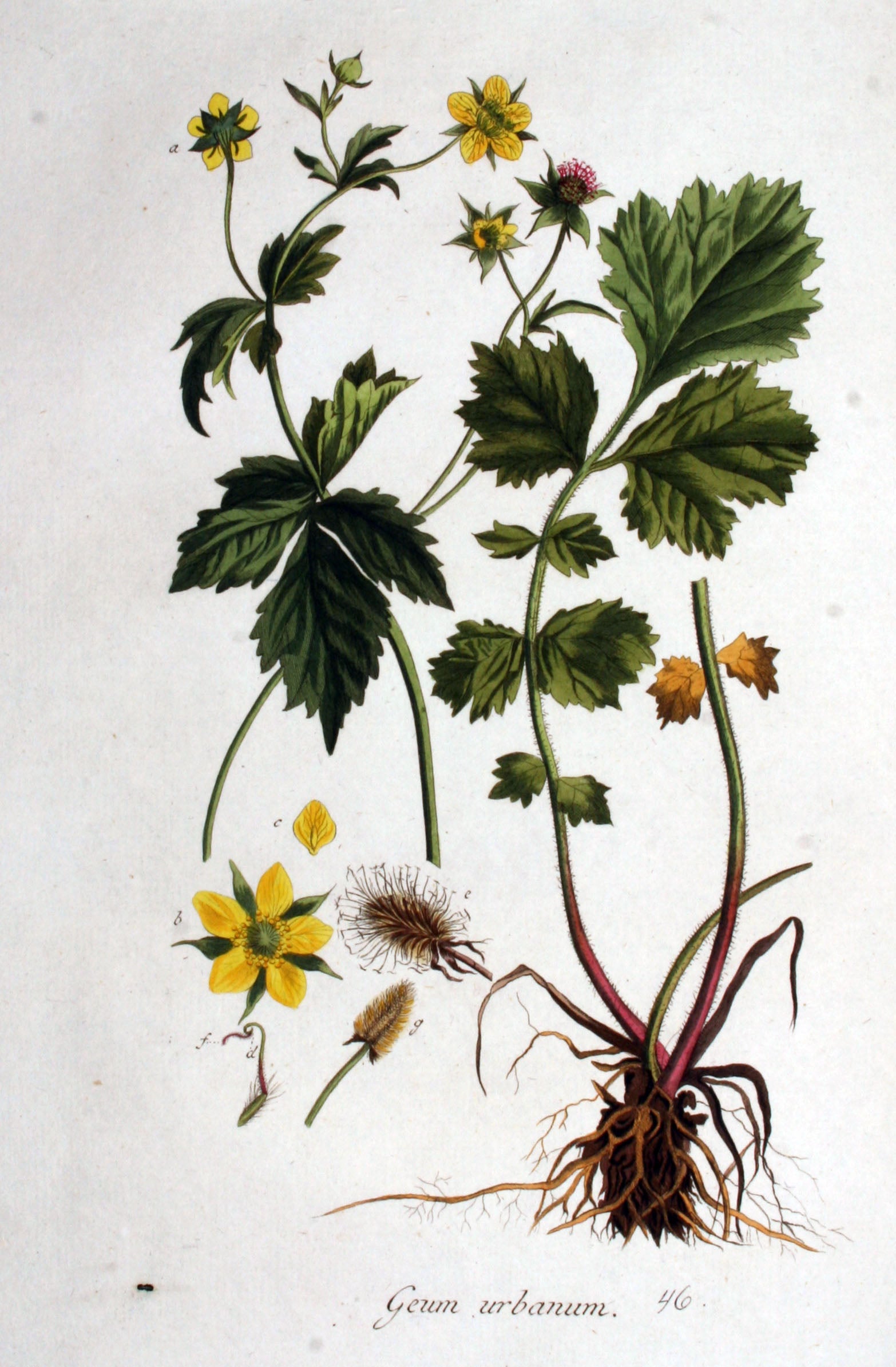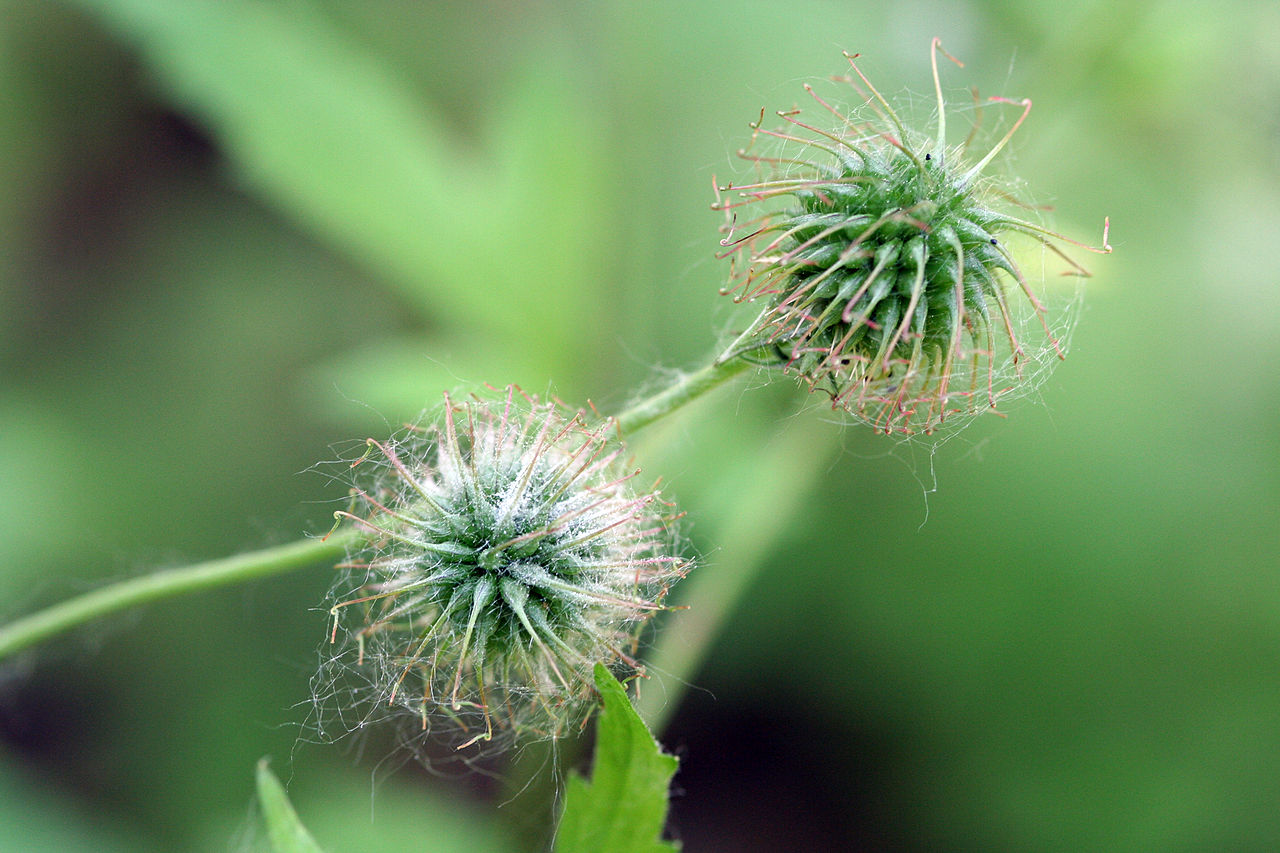Geum urbanum
Approx. 0.5 litre pot
About this cultivar:
Geum urbanum is also known as wood avens, herb Bennet, colewort and St. Benedict's herb. Native to shady places such as woodland edges and near hedgerows in Europe and the Middle East. The roots contain the compound eugenol which is also present in cloves and are used as a spice in soups and also for flavouring ale!
In folklore, wood avens is credited with the power to drive away evil spirits, and to protect against rabid dogs and venomous snakes. It was associated with Christianity because its leaves grew in threes and its petals in fives (reminiscent of, respectively, the Holy Trinity and the Five Wounds). Astrologically, it was said to be ruled by Jupiter.
Be careful inviting this into your garden as it can seed quite a lot and may become a pest, some think of it as a weed! The specific epithet urbanum means 'of a city', and this is a very common 'weed' of cities, towns and villages!
However if that is what you are after…..the flower and seed heads are very attractive and it can be great for naturalising difficult or neglected areas.
- Position: Full sun, partial shade
- Soil: Almost any soil, grows well in Ballyrobert
- Flowers: May, June, July
- Other features: Grows well in Ballyrobert
- Hardiness: H7 - Hardy in the severest European continental climates (< -20°C), Fully hardy - grows well in Ballyrobert!
- Habit: Clump forming, bushy
- Foliage: Evergreen
- Height: 45 - 75 cm (1.5 - 2.5 ft)
-
Spread: 45 - 75 cm (1.5 - 2.5 ft)
- Time to full growth: 2 to 5 years
- Plant type: Herbaceous Perennial
- Colour: Green, red
- Goes well with: Geraniums, grasses. Potentilla and Fragaria. Also try Dryopteris, Epimedium, Polygonatum, Trollius, Euphorbia, and Primulas.
About this genus:
Geum, commonly called avens, is a genus of about 50 species of rhizomatous perennial herbaceous plants in the rose family( Rosaceae). They are native to Europe, Asia, North and South America, Africa, and New Zealand - to earth basically. They are closely related to Potentilla and Fragaria. Most species produce flowers on wiry stalks, in shades of red, yellow and orange. Geum species usually have fuzzy-hairy evergreen foliage unless winter temperatures drop below −15 or -20 °C; not a regular occurrence in this part of the world.
Geum will grow anywhere that isn't full shade or in a puddle. Why are they not more popular then? I'll tell you my theory; when they are grown in pots they are very straggly and don't look great! The reality is that when planted in the ground they will be much more compact, bushy, and upright.
Their evergreen-ness makes them great for filling holes and providing year round interest; cut them back if you think they look scruffy in winter (I think they are charming in winter!). They are great with Geraniums, and I think, grasses. Often paired with their close relatives Potentilla and Fragaria. Also try Dryopteris, Epimedium, Polygonatum, Trollius, Euphorbia, and Primulas.

